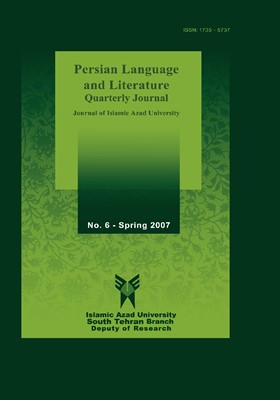-
-
List of Articles
-
Open Access Article
1 - Figures of Speech: A Historical Approach
هوشمند اسفندیارپور -
Open Access Article
2 - Poetic License: Vocabulary Selection
عباس باقی نژاد -
Open Access Article
3 - Popular Culture in the Works of M. A. Bahmani & H. Monzavi
سهراب برگ بیدوندی معصومه عیسی وند -
Open Access Article
4 - The Reality of Man in Theoretical Mysticism
مرتضی شجاری -
Open Access Article
5 - Siyāvash in Persian Literature
نسرین شکیبی ممتاز -
Open Access Article
6 - Esfandiyār: The Open and the Closed Eyes
سعید گنج بخش زمانی
-
The rights to this website are owned by the Raimag Press Management System.
Copyright © 2021-2025







